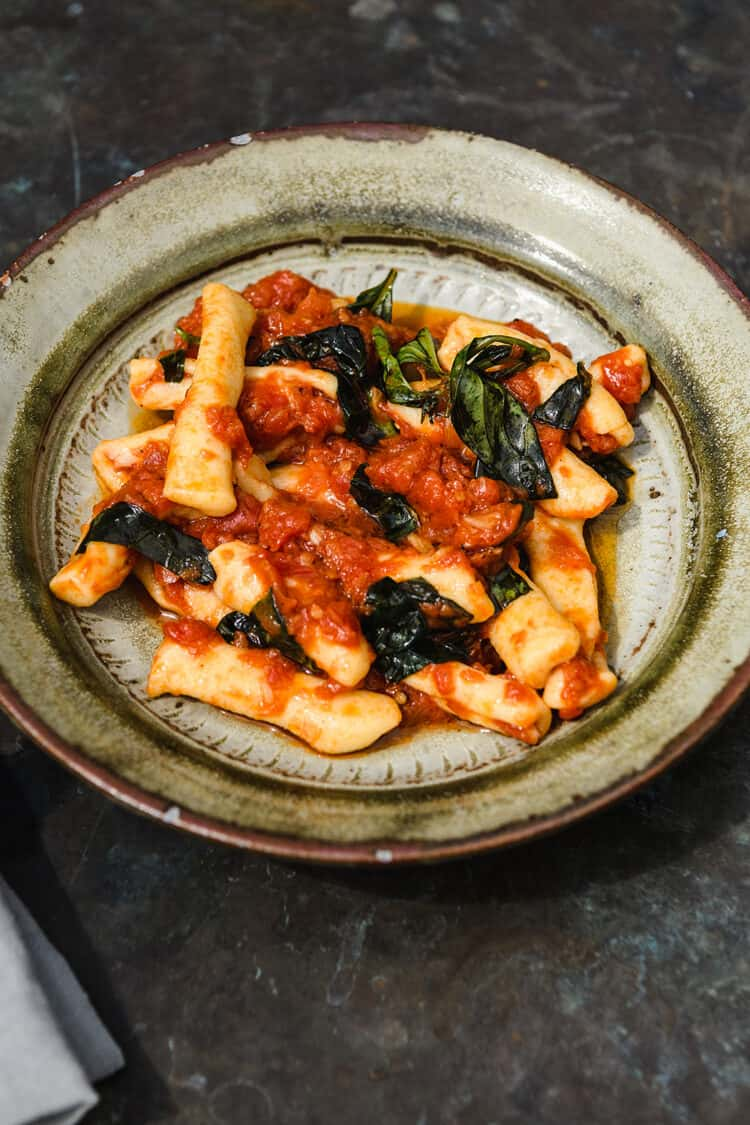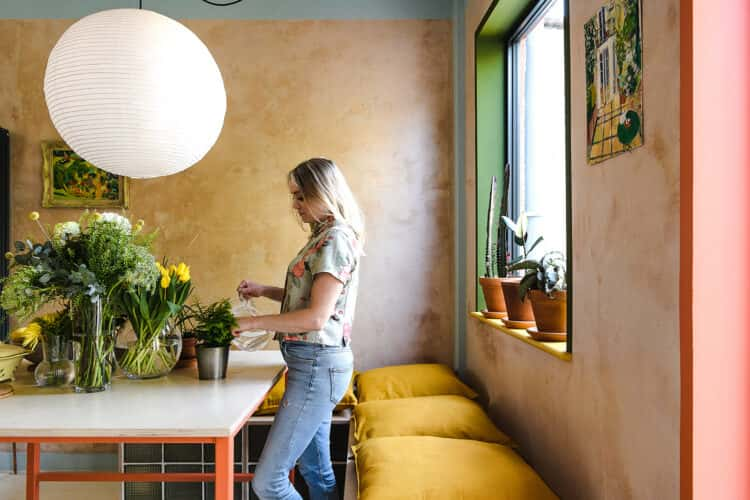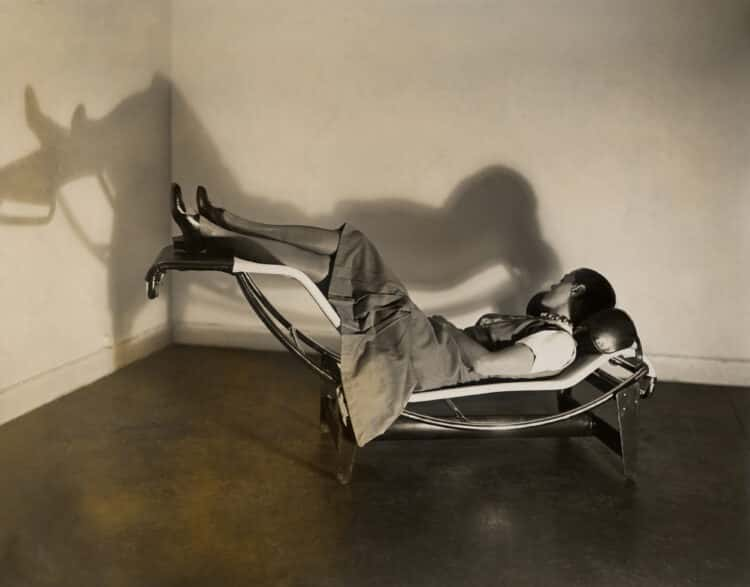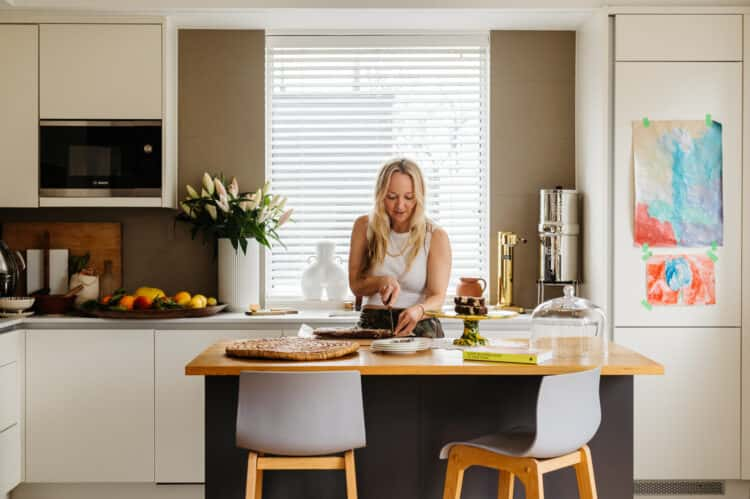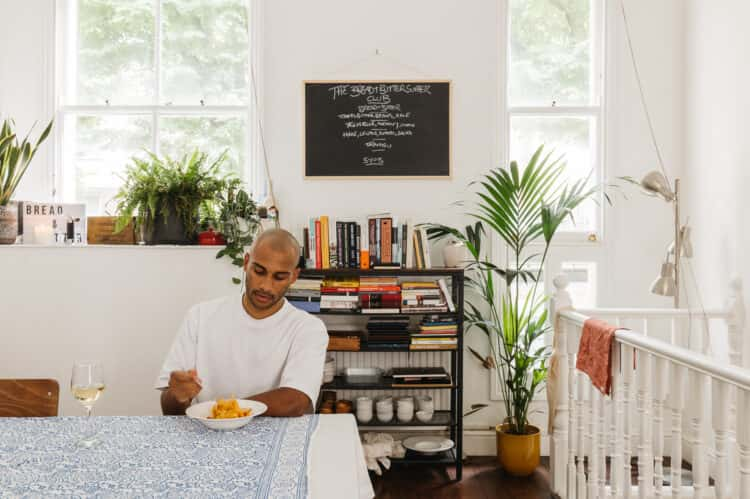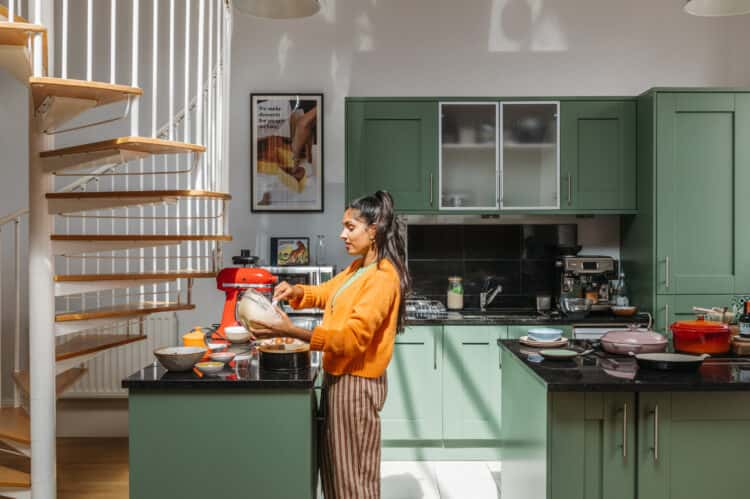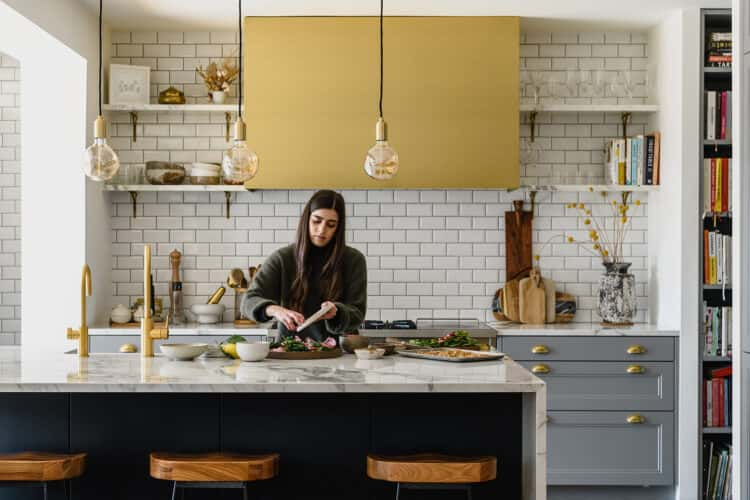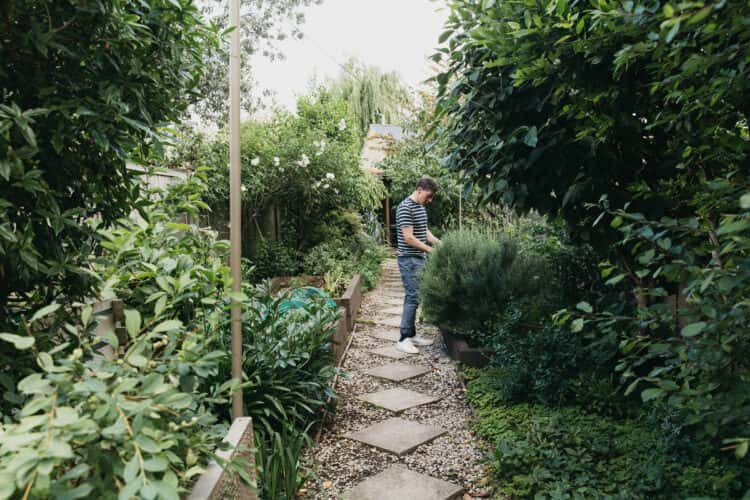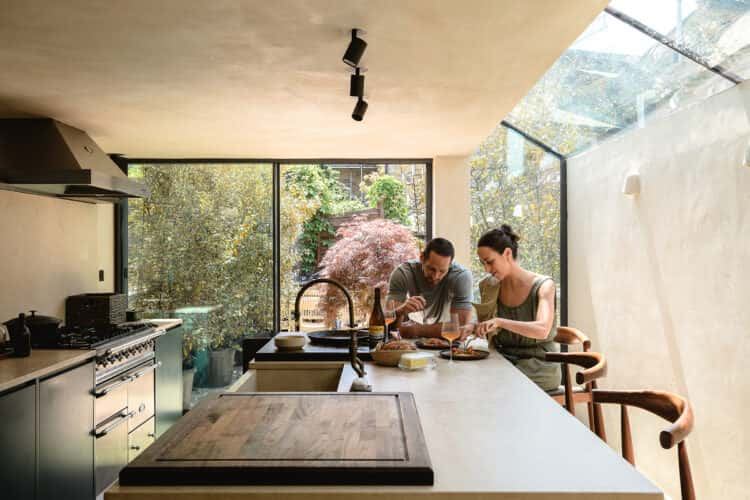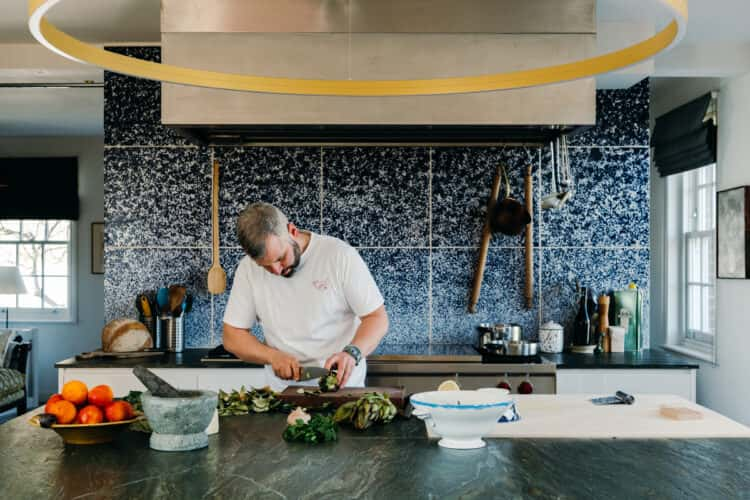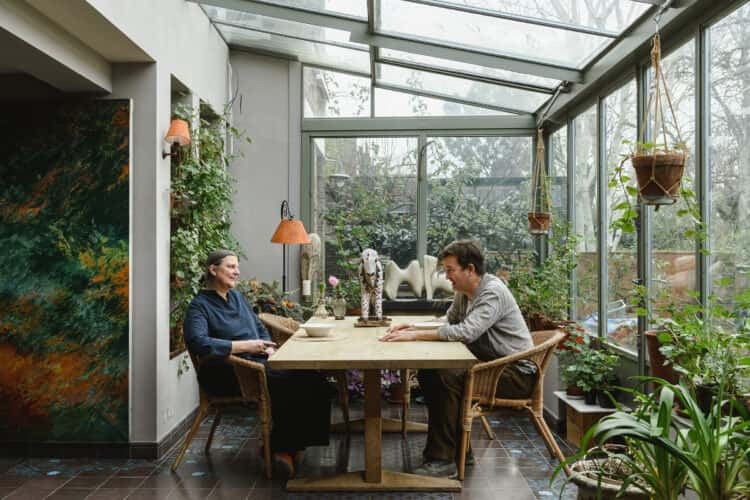Pastaio founder Stevie Parle on cooking simply at his home in Kent, plus a recipe for homemade cavatelli and a slow-cooked tomato sauce
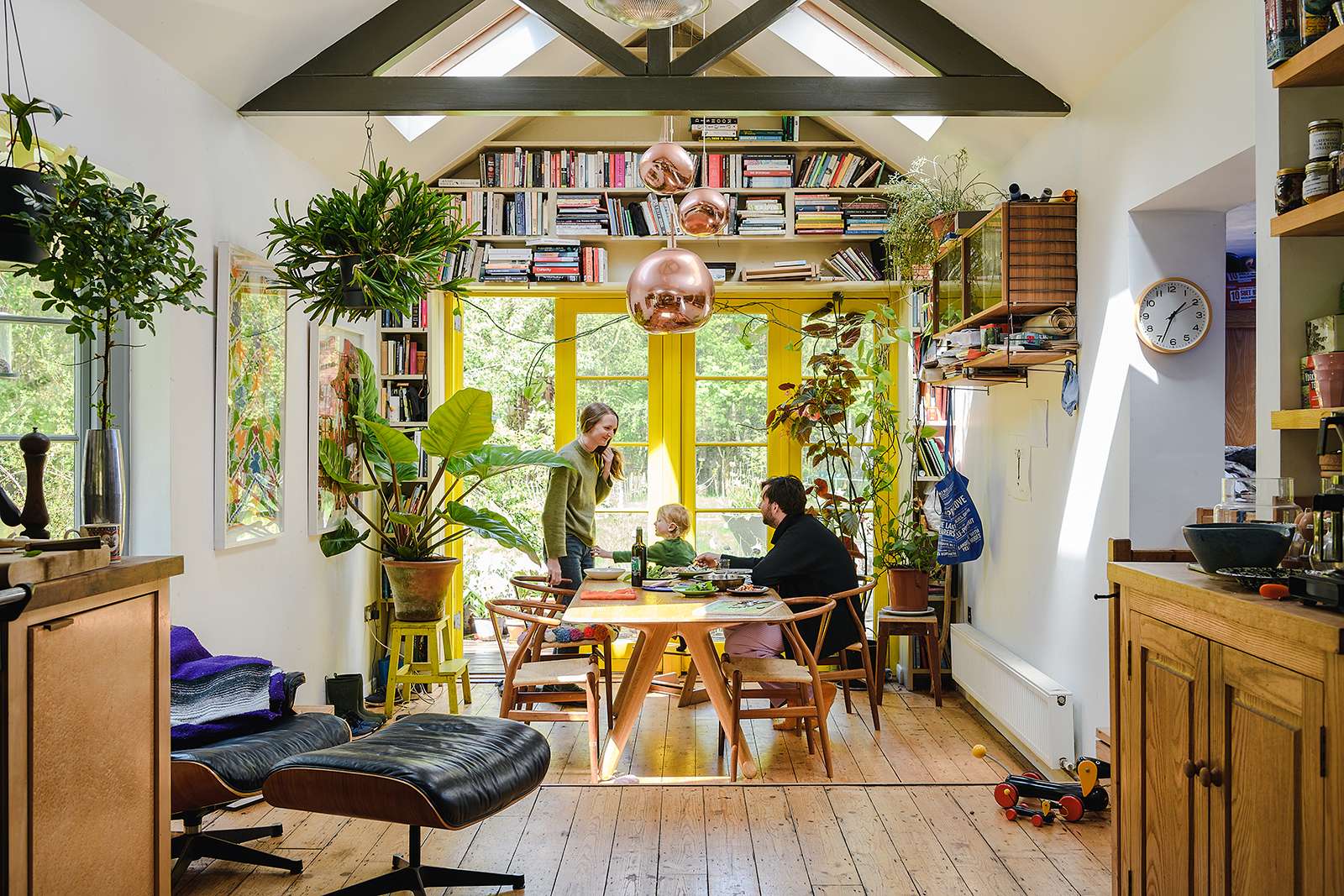
Stevie is known for his unfussy, seasonal approach to cooking. Whether that be sausage ragu and fresh malloreddus at his Soho pasta restaurant, Pastaio, or first of the season asparagus with brown butter at Joy, his recently opened outdoor restaurant in Portobello, good ingredients are at the heart of his dishes. He’s learnt from the best over the course of his 20 years in food, having started at the River Cafe aged just 17, before going onto work for the likes of Moro and Petersham Nurseries. Here, he talks to us about his love for wooden spoons and explains why he prefers a simple approach when it comes to cooking at home.

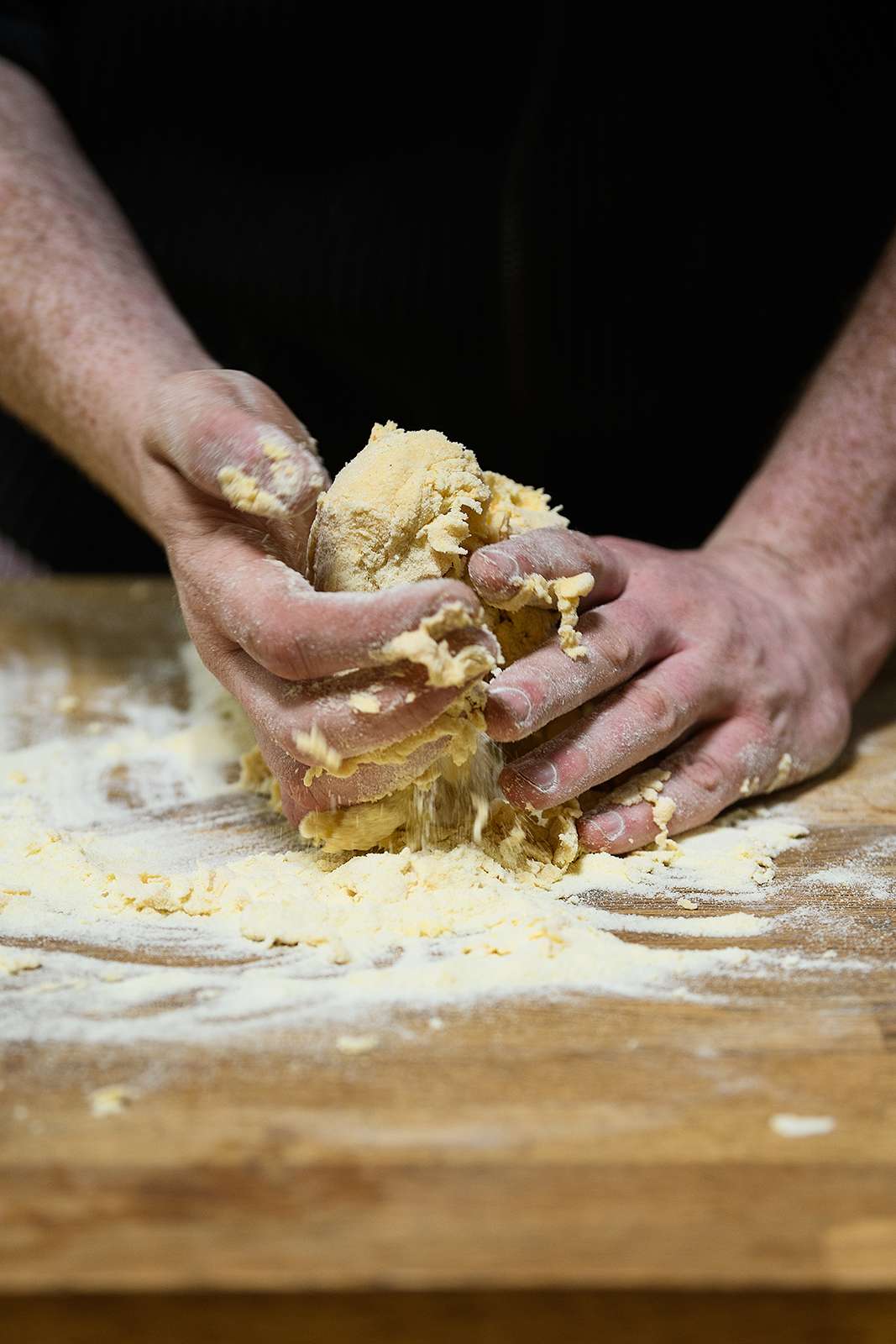
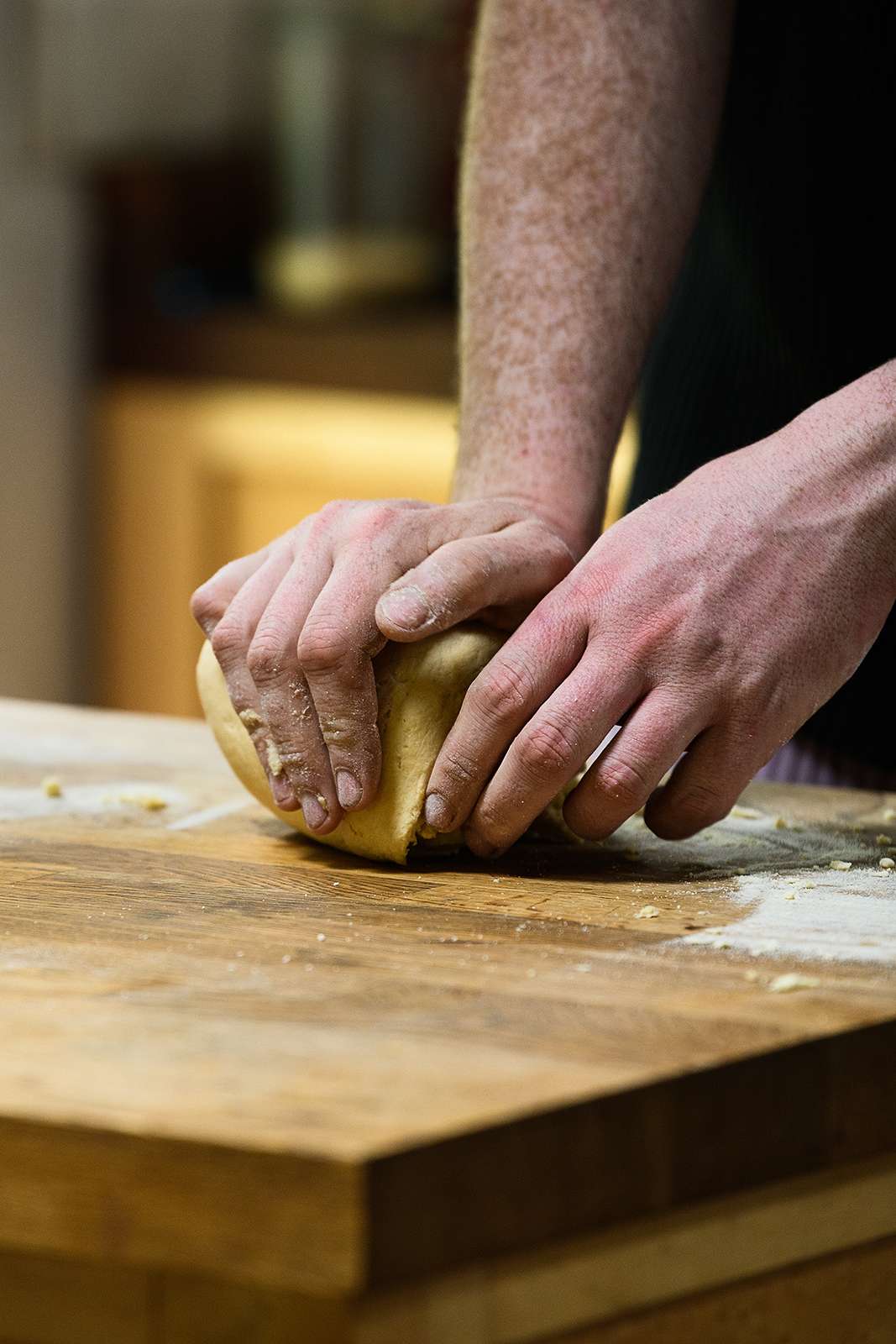
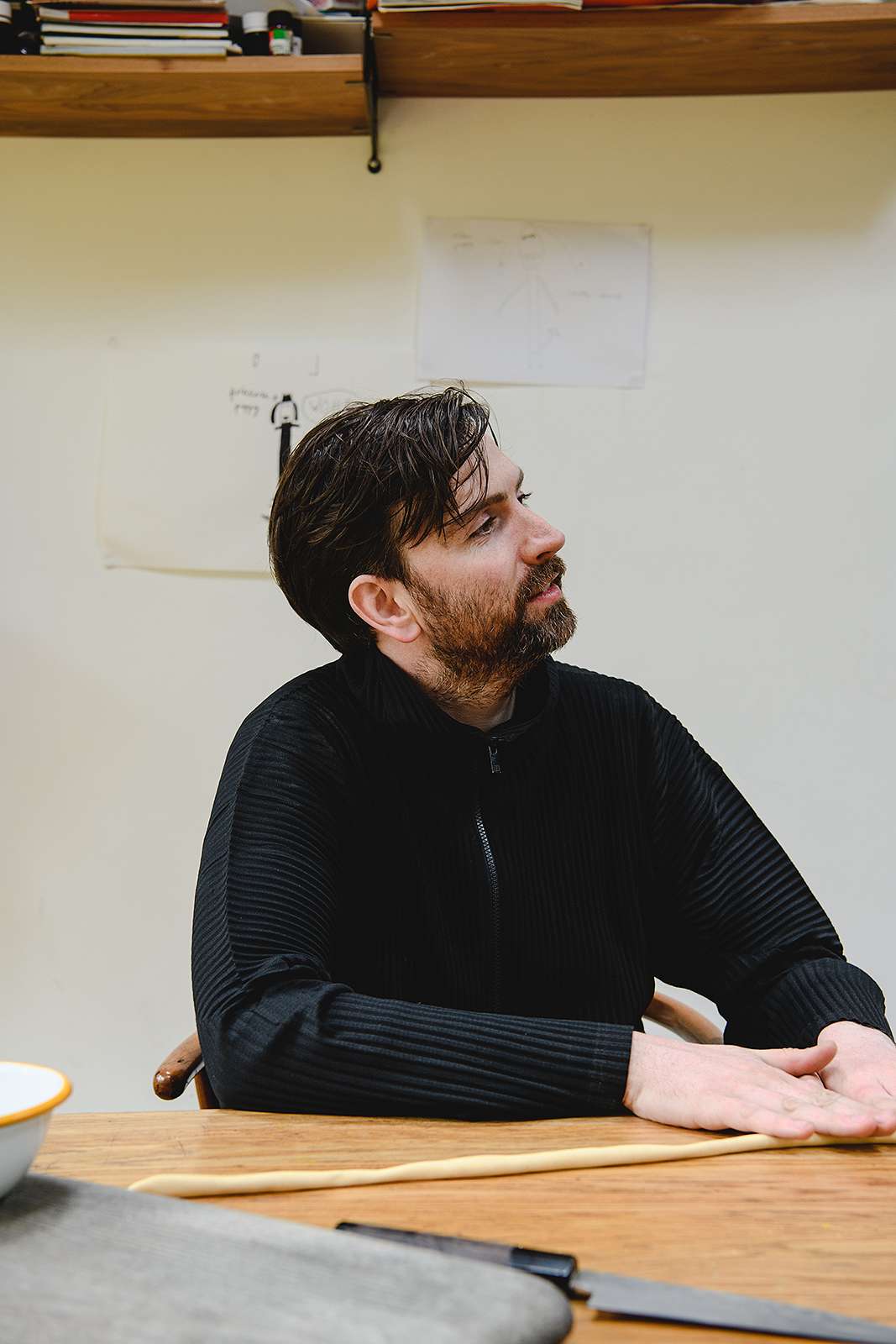
“This kitchen is designed to be really simple. I spend a lot of time designing kitchens for restaurants where I have to think about the flow and ensure it works like a machine, but this didn’t have to be quite as considered.
“We worked with what we had when we moved into the house about five years ago. The kitchen is right in the middle of our single-storey cottage and the whole space is quite open-plan, with the dining table on one side and the sitting area on the other. We made the kitchen in a sort of L-shape out of various different woods, with oak worktops and walnut cabinets. I like to be able to cook and chat at the same time, so we created a section of work surface that faces the sitting area, which is really nice. I can be chopping away while having a drink and chatting to friends.
“I really didn’t want this to feel like a show kitchen. I wanted to be able to see everything, so nothing is hidden away and it can often feel quite messy. All my pans hang on the walls and the knives are on a wall-mounted rack. Equally, the work surfaces have to be completely clear, as it stresses me out otherwise. I really hate the idea of having to move loads of things and clear up before I cook. We have a slightly separate room off the kitchen, which is half larder, half laundry, and we’ve added lots of open shelving. They’re filled with thousands of different spices, weird grains and various other ingredients that I’ve been experimenting with for work.
“I love to cook on our wood-fired Esse stove and don’t really have a lot of fancy kit. I guess the few gadgets we have are a blender and a microwave, which is only a recent discovery. It feels a bit like magic and I’ve realised it’s a very good way to cook green vegetables as they really keep their flavour. I like the sorcery of it all.
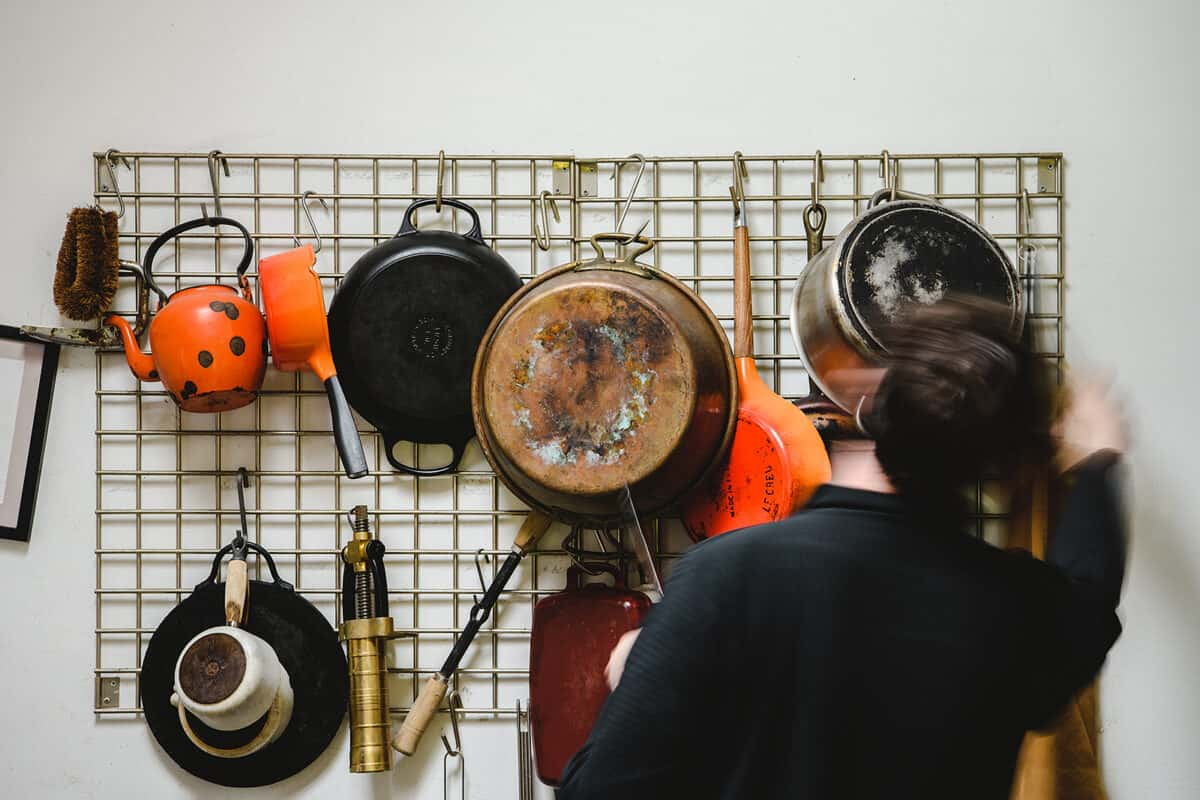
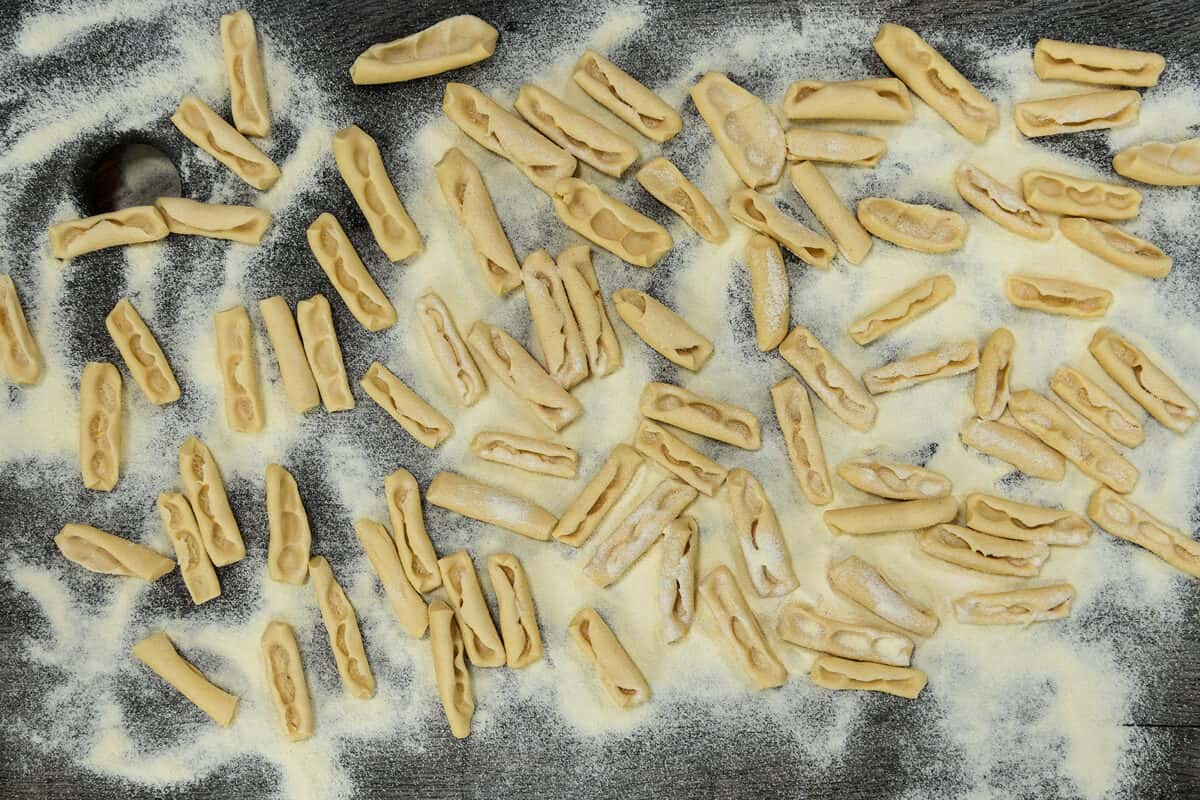
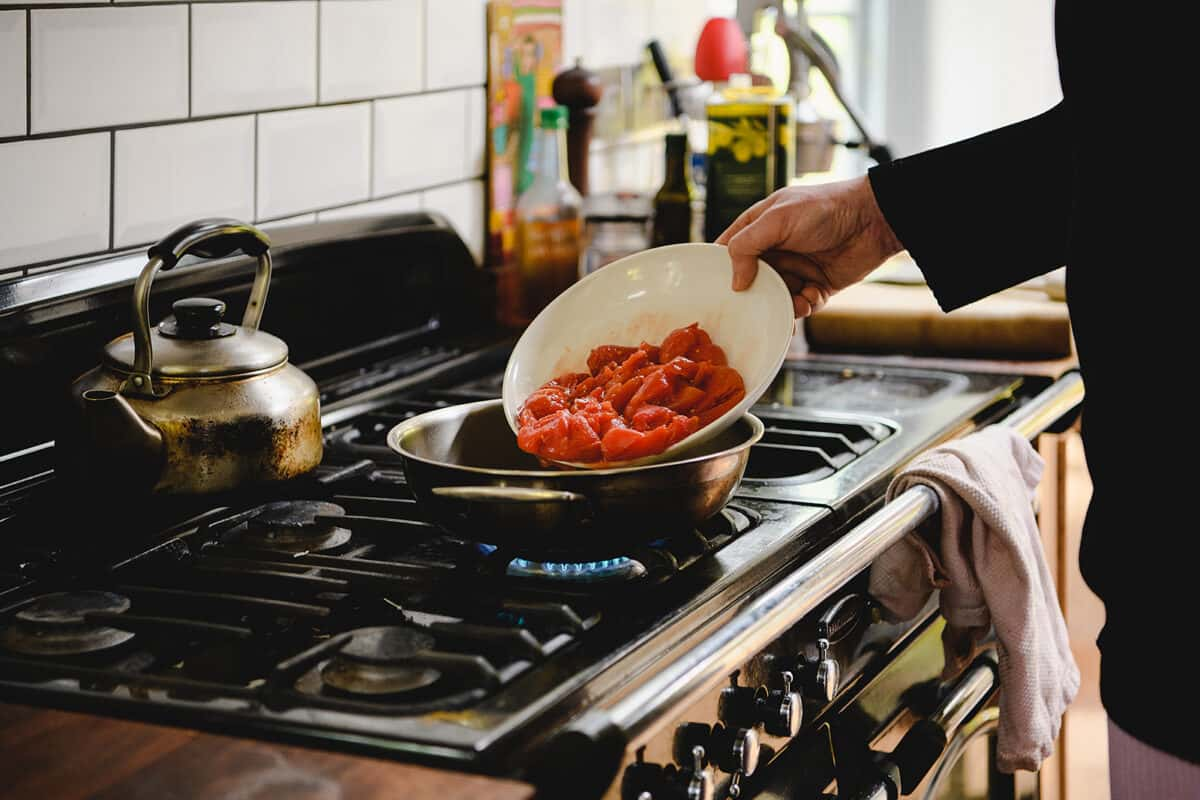
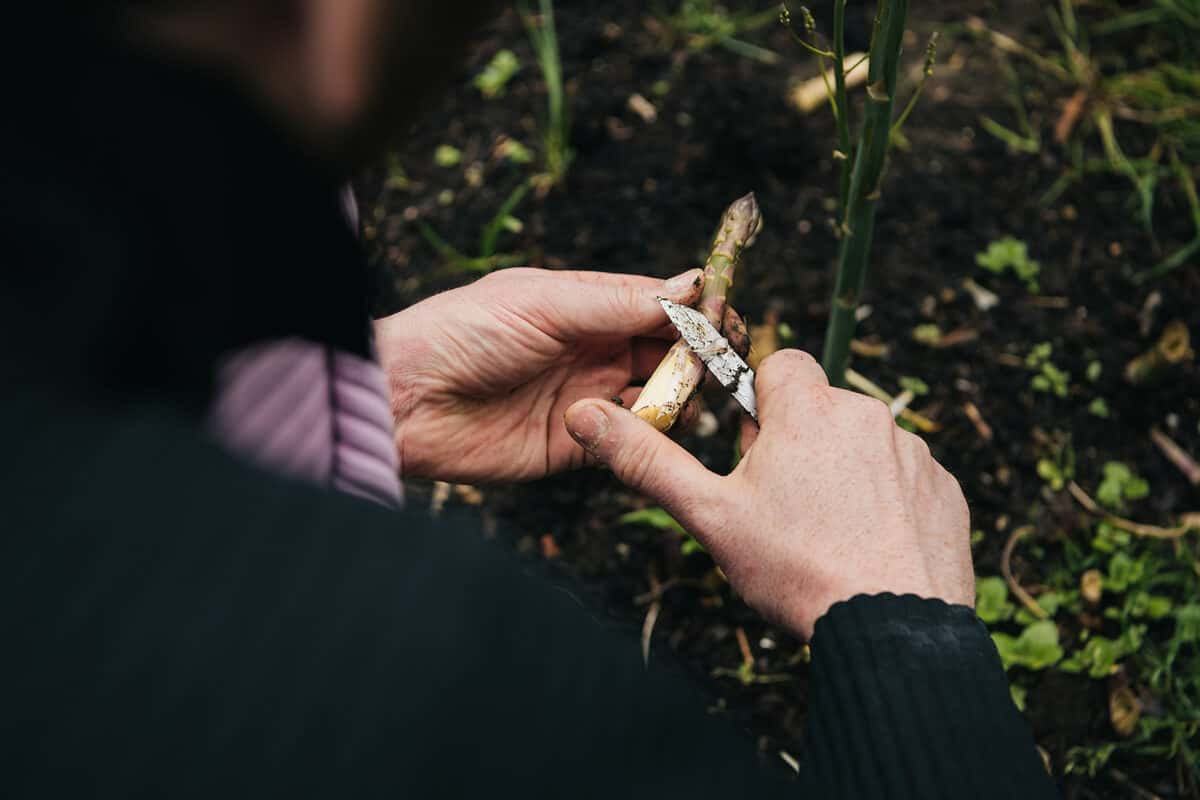
“My most cherished kitchen tools are my knives and really good quality heavy pans. I’ve got tonnes of Le Creuset pans, which last forever, and a really good pan that I nicked from work at some point. I’m not into any of that non-stick rubbish.
“I spend a fair bit of money on knives. I think Japanese knives are the best in the world and I bought some when I visited Tokyo a few years ago. There’s a street called Kappabashi Street, which literally translates as Kitchen Street, and you can find anything that you might want. I’ve also just treated myself to a couple from Blenheim Forge in south London.
“I’ve got a lot of wooden spoons and love how they all tell stories. I’ve got one that was given to me by a Korean monk, another from a woodcarver in Hackney and one from Turkey that has mushrooms carved into it. I always buy them if I see them and really like the process of cooking with them. When I was at the River Cafe, Rose Gray wouldn’t let you go near a risotto with a metal spoon and I guess that’s always made me appreciate wooden spoons. It makes sense because you don’t want to be stirring metal on metal.
“My approach to home cooking is incredibly simple. A lot of chefs don’t eat the same food at home that they cook in their restaurants because it’s too complex. I don’t even cook fancy food at work, but I like to go even simpler at home. In the restaurants, I want the food to be really punchy and impactful, but at home, I’m happy with less flavour. I’d never just serve a piece of grilled fish with lemon in one of my restaurants, but I love to eat that kind of food at home.
“My wife, Nicola, tends to cook for our three kids in the week because I’m often in the restaurants. We cook in really similar ways and when I’m at home, I try and do slightly more of the cooking. I like to make big batches of slow-cooked dishes, as it’s always reassuring to have them in the freezer waiting for you to just heat up. There’s a good beef and porcini ragu that I make quite often and we always have a batch of tomato sauce for pasta. The kids are wild for chicken curry so that’s another favourite that I’ll cook in large quantities.
“We buy all of our food at home from The Goods Shed in Canterbury, which is this incredible 20-year-old farm shop near us. All the produce comes from within a few miles of them. It’s completely real and proper.
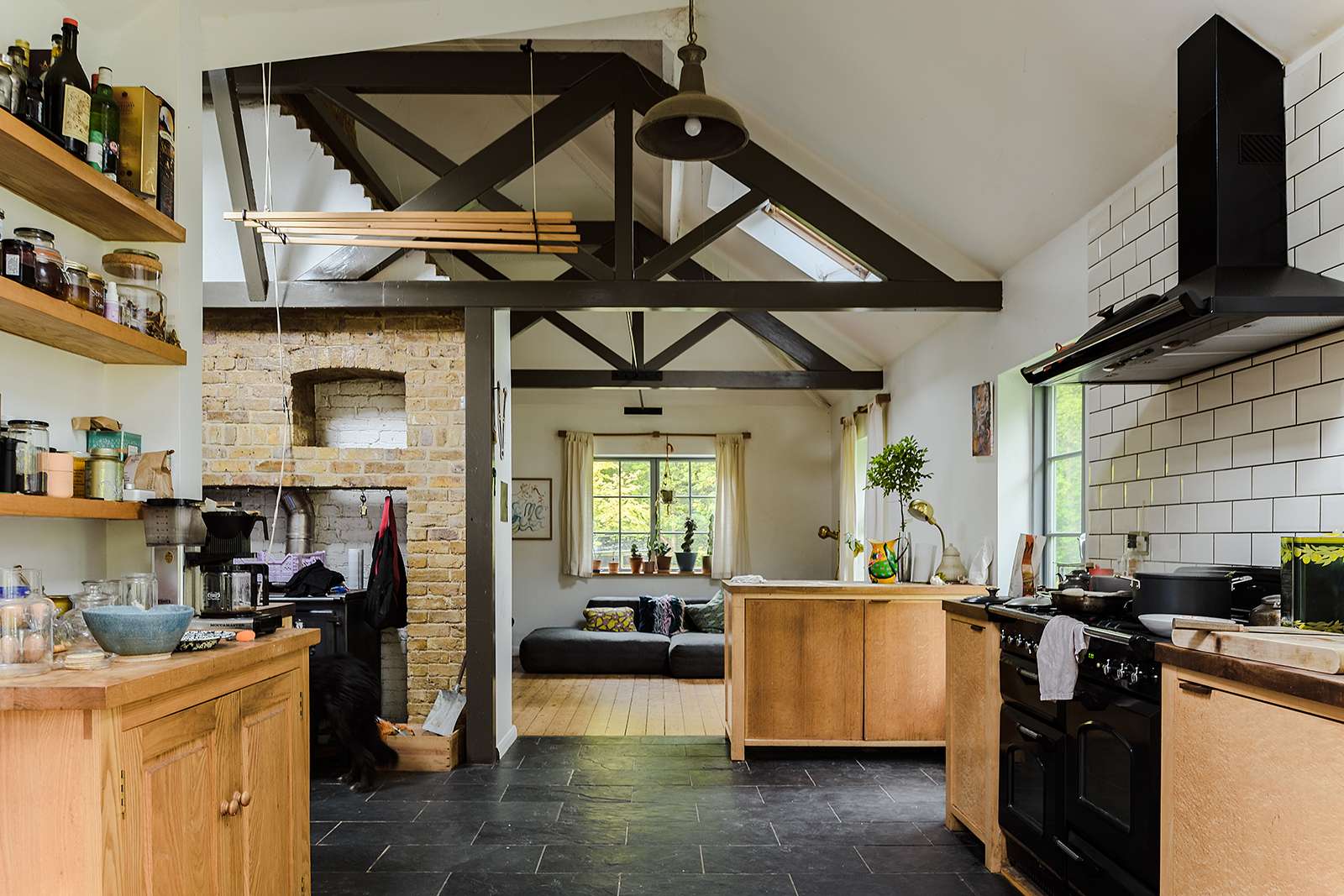
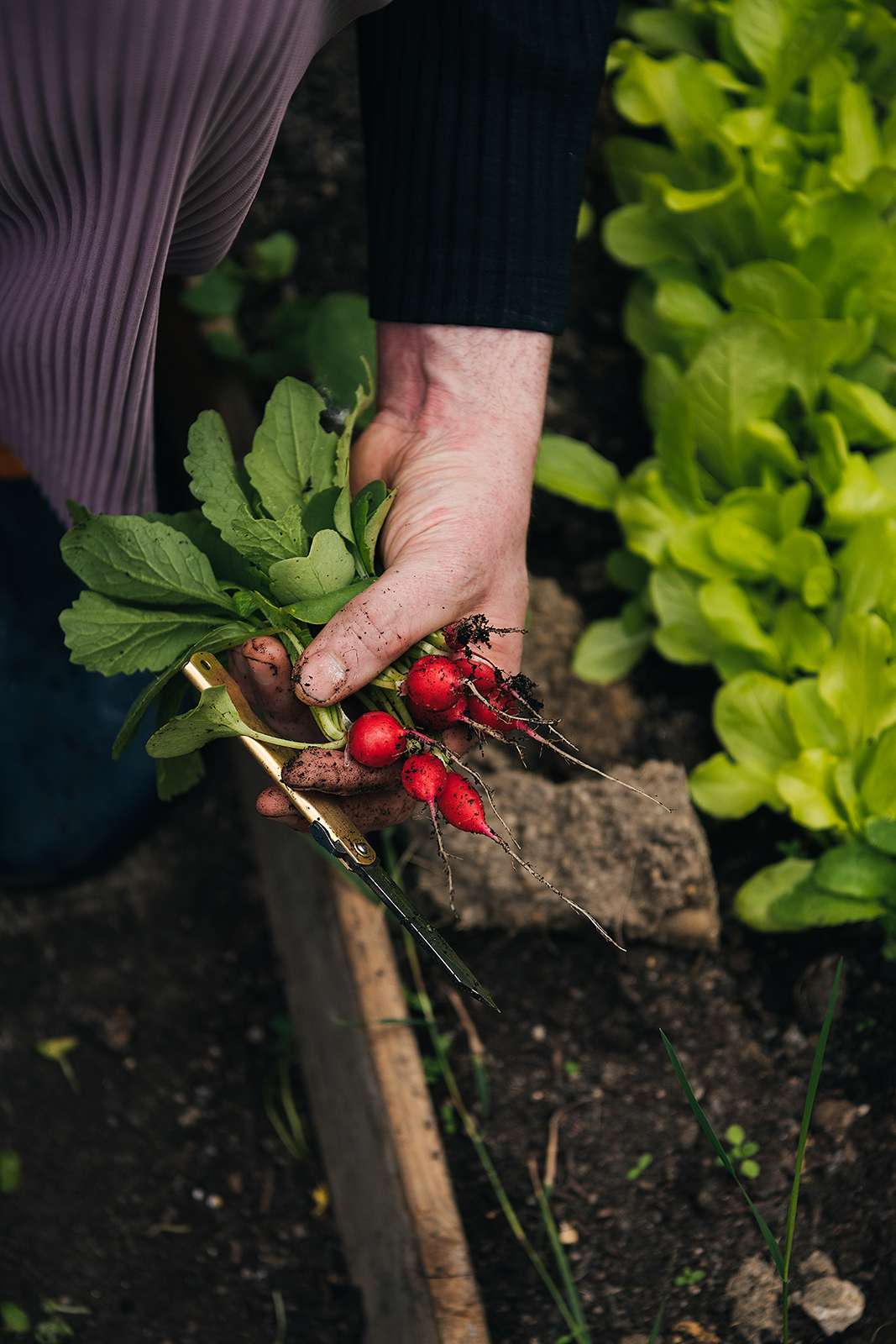

“The cookbooks I refer to most are any of the River Cafe’s books and Patience Gray’s Honey from aWeed: Fasting and Feasting in Tuscany, Catalonia, the Cyclades and Apulia. This one isn’t great for someone trying to get into cooking as it’s quite esoteric and full of strange cheeses and dandelions, but I’ve found it incredibly inspiring.
“The River Cafe books have been a huge inspiration from the beginning of my career. They’re not only important books, but they were real game-changers, especially from a design perspective. I remember trying to cook from them when I was young, but you couldn’t really find cavolo nero or single estate olive oil where I grew up in Birmingham!
“I don’t often cook from books that much, but I always follow recipes for cakes and biscuits when I bake with my kids. A really good one is Genius Desserts: 100 Recipes That Will Change The Way You Bake by Food 52’s Kirsten Miglore – every single one of the recipes is awesome. I also love my friend Claire Ptak’s book The Violet Bakery Cookbook – our taste is very similar, so I’ll grab that if I want to make a cookie or banana bread.
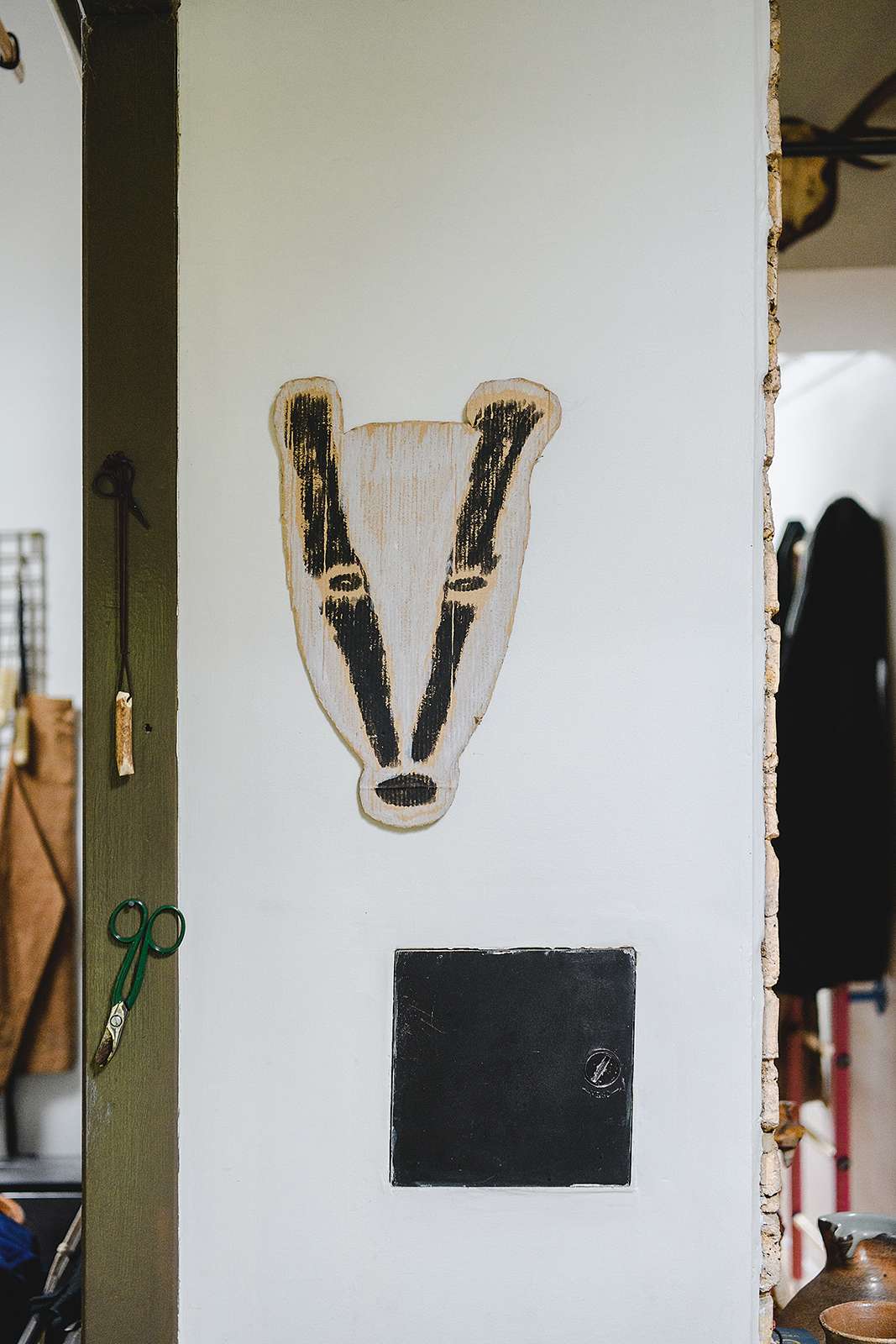
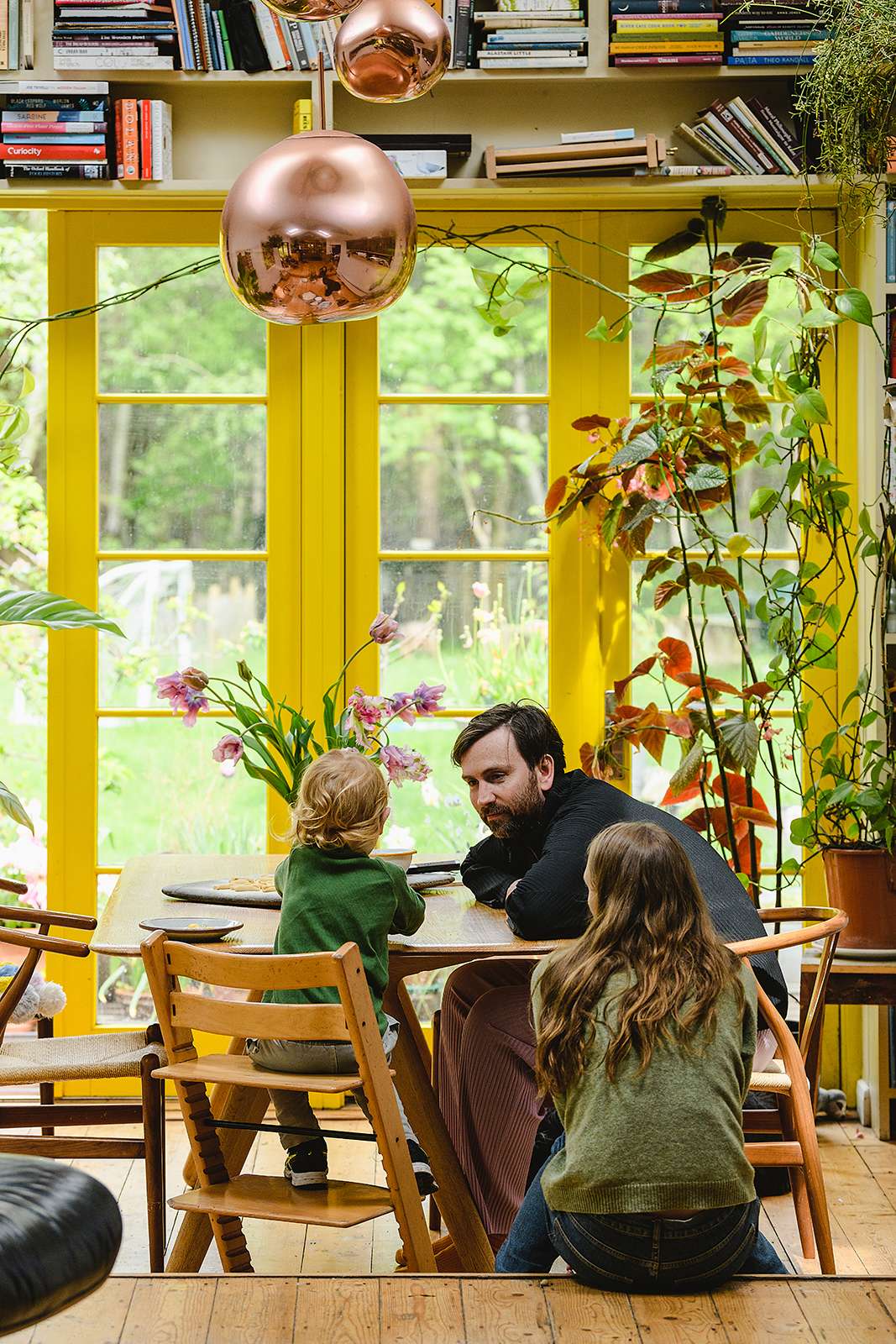
“A weekday meal here looks like grilled fish or meat with simple vegetables from the garden. I like to cook on the barbecue outside – it isn’t really an event, just a way of cooking.
“Our kids go through phases and can sometimes be really fussy, but I’ve realised that generally, they like everything to be quite separate and to see what all the components are. That said, they love chicken curry, so that rule doesn’t always work. We’ll generally cook the same food for us and them, but then I’ll just pound up an anchovy in some olive oil and Nicola and I will add that onto our vegetables. I love to cook something for the kids that I know they’re going to eat.
“At the weekend we like to cook dishes that take a bit more work. I enjoy cooking something that will take a few hours, hopefully with the help of one of my children. I have a fire pit in our garden so I’ll sometimes fire that up and cook something over it, like a big piece of beef or a leg of lamb. I let it spin on a piece of string – what they refer to as alla ficelle in Italy.
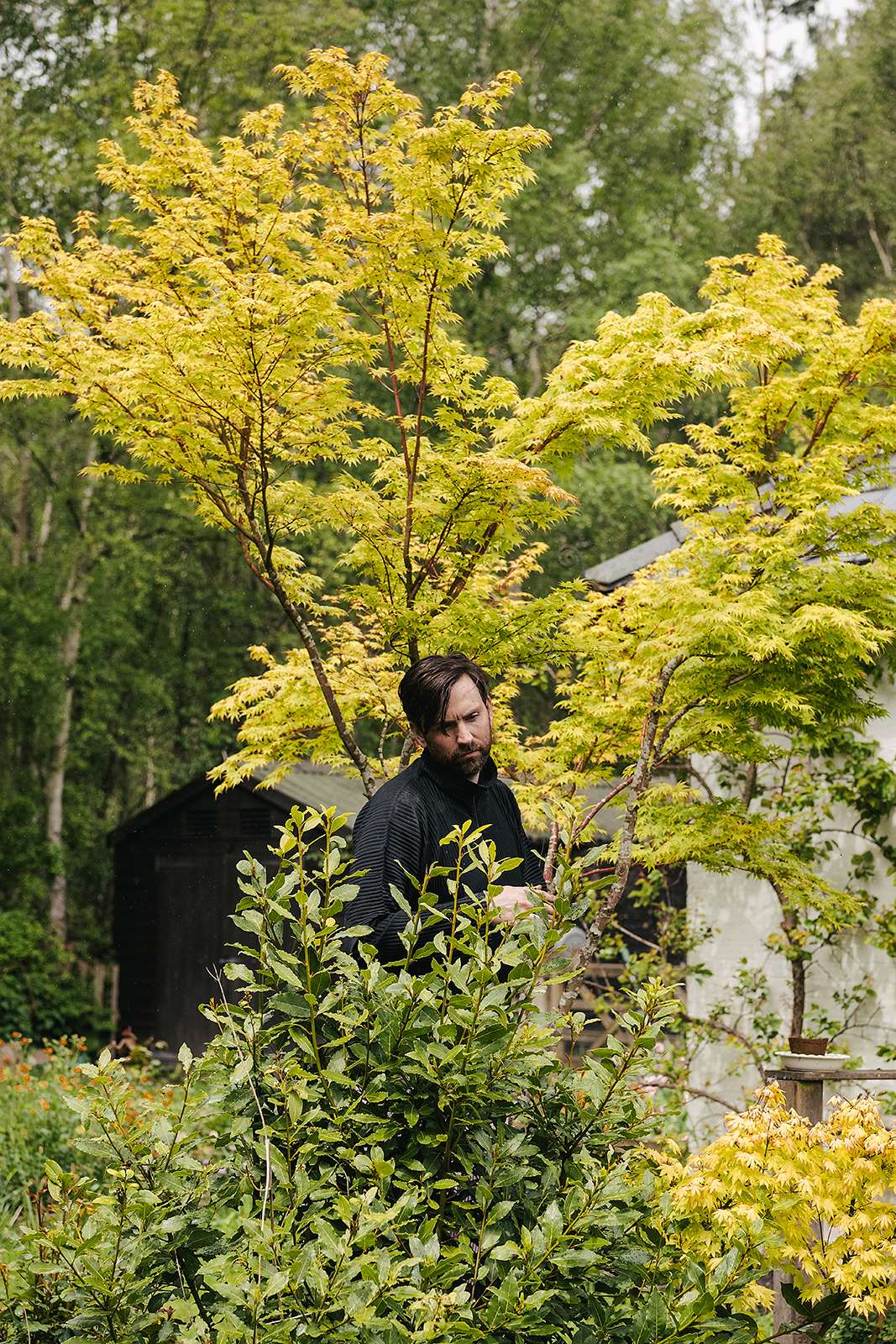
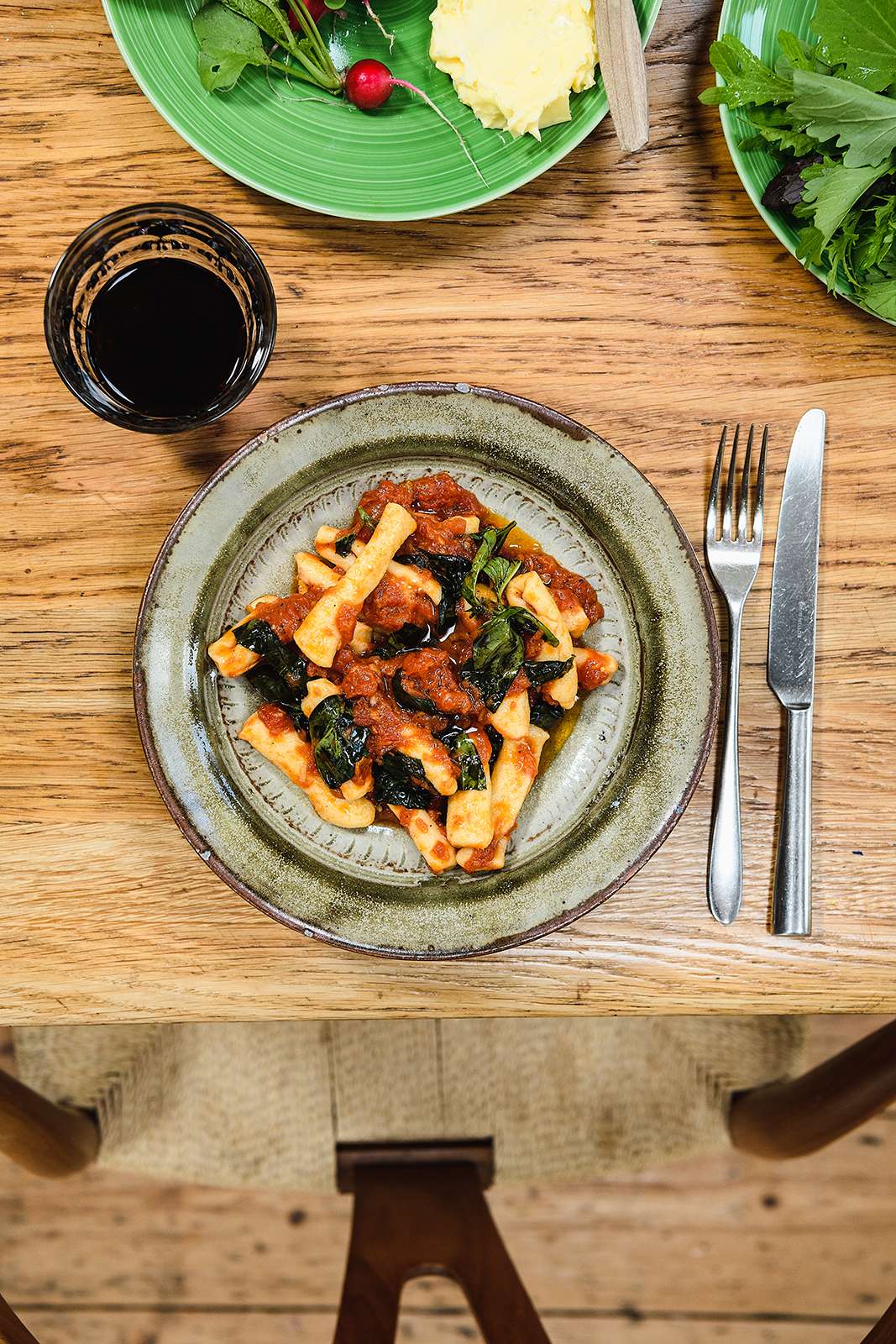
“Most of my favourite memories are with friends around a table in the garden in summer. Our garden is so important to the food we eat, as we grow lots of our own vegetables and keep bees. We kept pigs a few years ago and it’s amazing to eat pigs that you’ve reared in your own garden on acorns, plums and apples. We live in a nature reserve and there are so many wild mushrooms in the woods surrounding the house and I love picking them with friends. Some years, you’ll go out for a 20-minute walk with the dogs and come back with 3kg of fresh porcini mushrooms.
“I grew up in a home where there were always extra people for dinner and it was never a big deal. I love having people around and never feel pressure to impress. Right now, I am incredibly nostalgic as we haven’t had anyone around since about 2019, which feels like a very long time ago.”
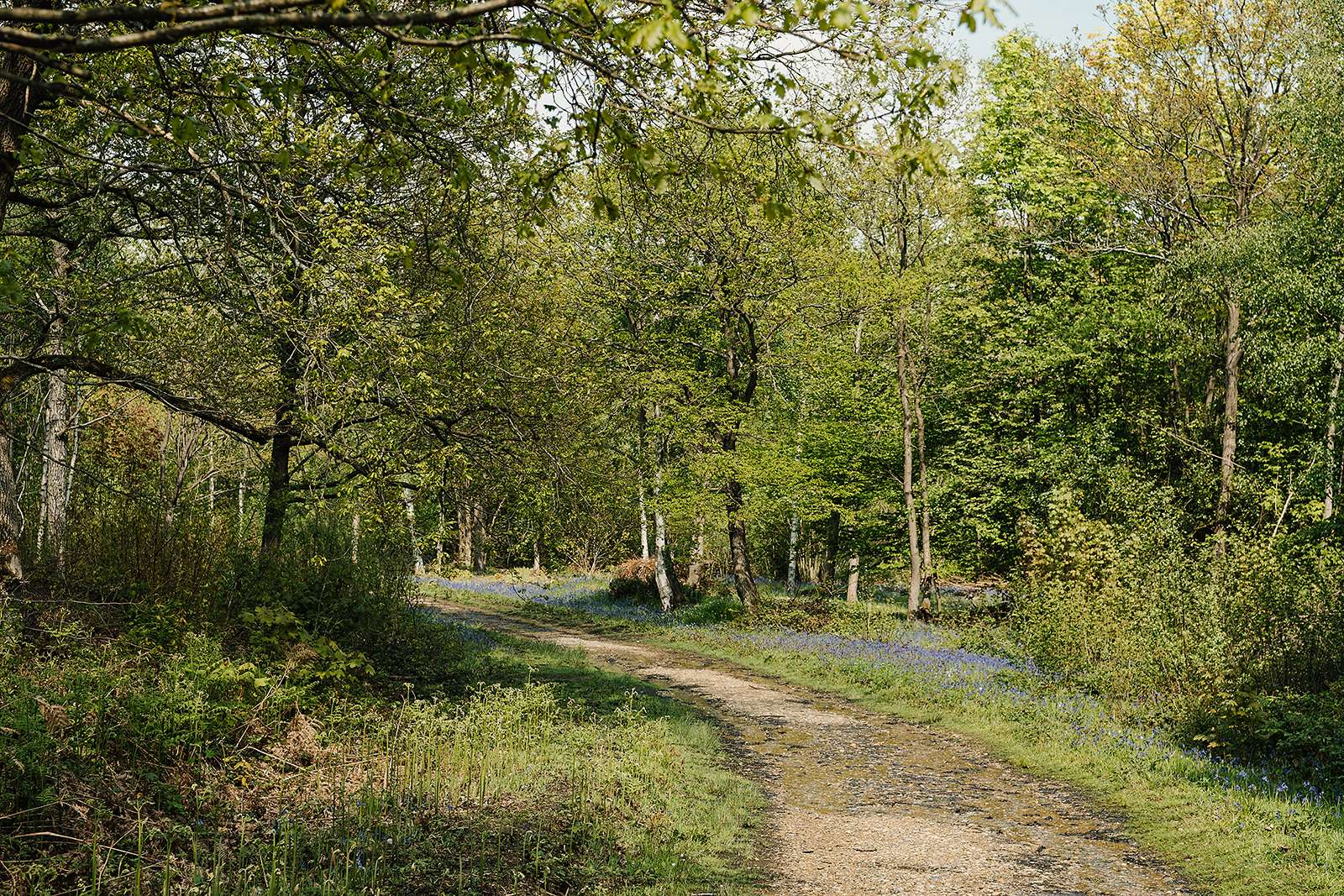
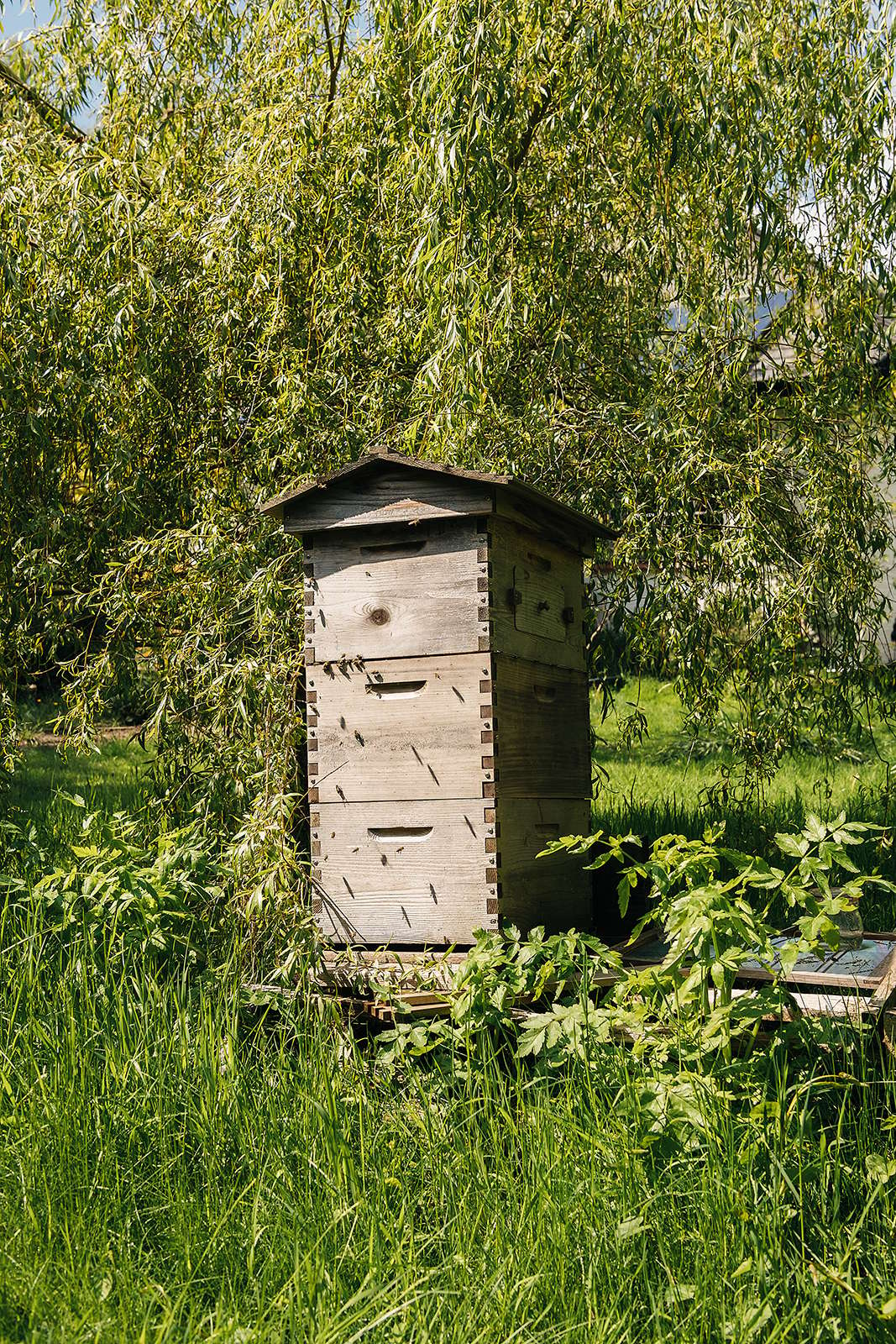

“I love making hand-formed pasta at home, as it’s a wonderful thing to make if you’re only making two to five portions. I find the process really meditative and almost feel that I can think more clearly if I’m doing something repetitive. For cavatelli, you roll the dough into a worm, cut it into small lengths and then roll your fingers back on it to make an indentation that holds the sauce beautifully. It’s similar to orecchiette, although that’s a bit more difficult.
“For the sauce, I just use tomatoes, garlic, olive oil and salt – it’s a nice lesson in keeping it simple. I use a tin of peeled plum tomatoes, rinse the thick tomato sauce off and then chop them up finely. The difference between a bit of burnt garlic and raw garlic is massive; you want to catch them at the point when the garlic slices are starting to stick together and change colour. Once I’ve added the tomatoes, I turn it right down and cook slowly for a couple of hours.”
Serves 4
400g semolina flour
Approx. 200-225ml water
3 tbsp olive oil
3 garlic cloves, finely sliced
2 x 400g tins of plum tomatoes, drained and rinsed
A small bunch of basil, leaves picked
Extra-virgin olive oil, to finish
Grated Parmesan, to serve
Place the semolina flour on a board or in a bowl and make a well in the centre. Pour in the water, starting with a little and adding more as needed. Use your hands to bring together the crumbly bits and knead until you have a nice lump of dough. It will initially be very crumbly, but after about 5 minutes of kneading, you’ll have a smooth dough. The dough should feel slightly tacky.
Wrap in clingfilm and place in the fridge to rest for 30 minutes.
Meanwhile, warm the olive oil in a heavy pan over a medium-low heat and fry the sliced garlic for a few minutes until it begins to feel sticky when stirred and is slightly coloured on the edges. Add the tomatoes, breaking them up with your spoon, season lightly and pour in ½ tin of water.
Turn the heat down to low and simmer, stirring occasionally, for 1 hour, adding splashes of water if it begins to look dry.
While the sauce is cooking, shape the pasta. On a clean work surface, cut the dough into 8 pieces and roll each one into a long sausage, about ½ cm in diameter. Cut into approx. 2 cm pieces and using either your thumb or a gnocchi board, roll each piece to form an indentation in the dough.
Place in a single layer on a piece of greaseproof or floured baking tray.
Bring a pan of salted water to the boil and cook the cavatelli for approx. 3 minutes (have a taste to check you’re happy), then drain, reserving a cup of the cooking water.
Once the tomatoes have been cooking for an hour, have a taste to check the seasoning and stir in the basil leaves. Tip in the pasta and a good splash of cooking water and simmer together, stirring, until the pasta has absorbed some of the sauce. Transfer to warm plates and drizzle with some nice oil and a sprinkling of Parmesan.
